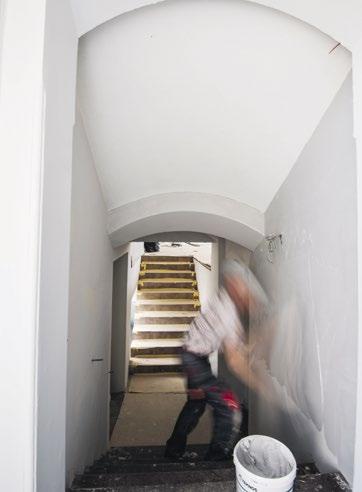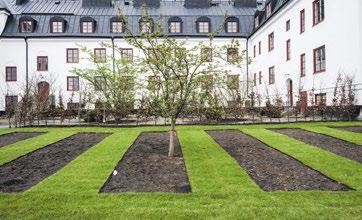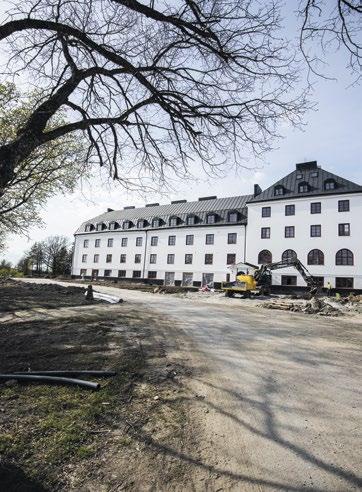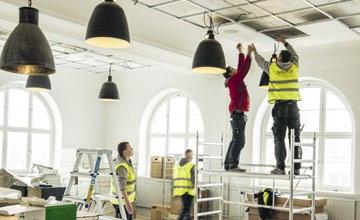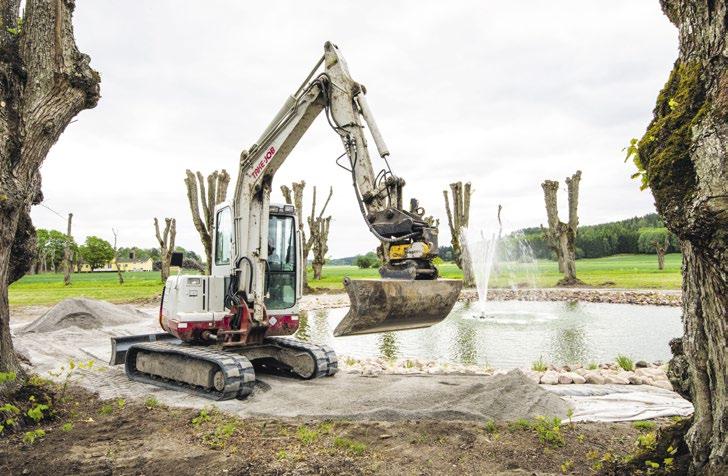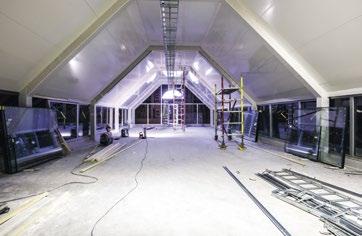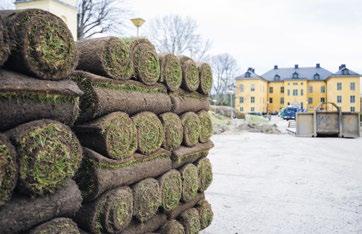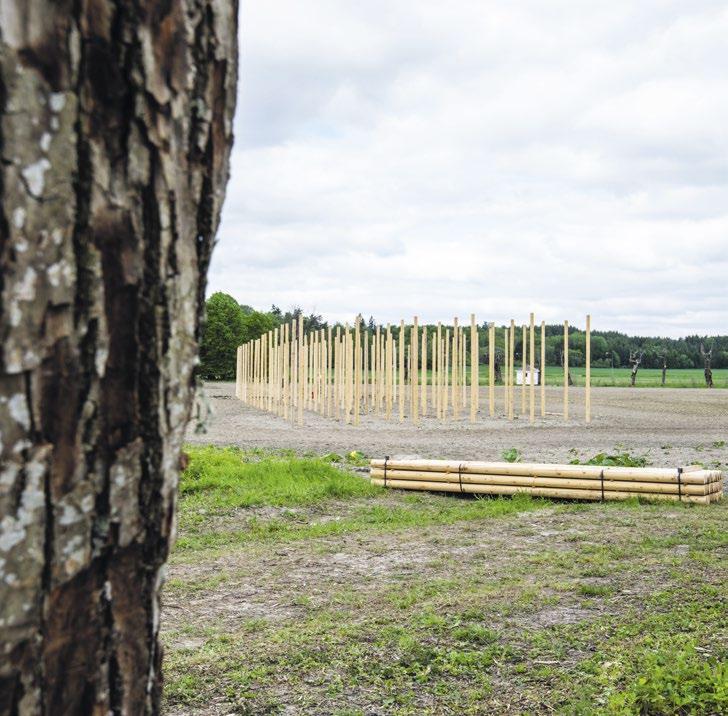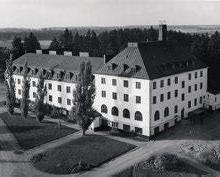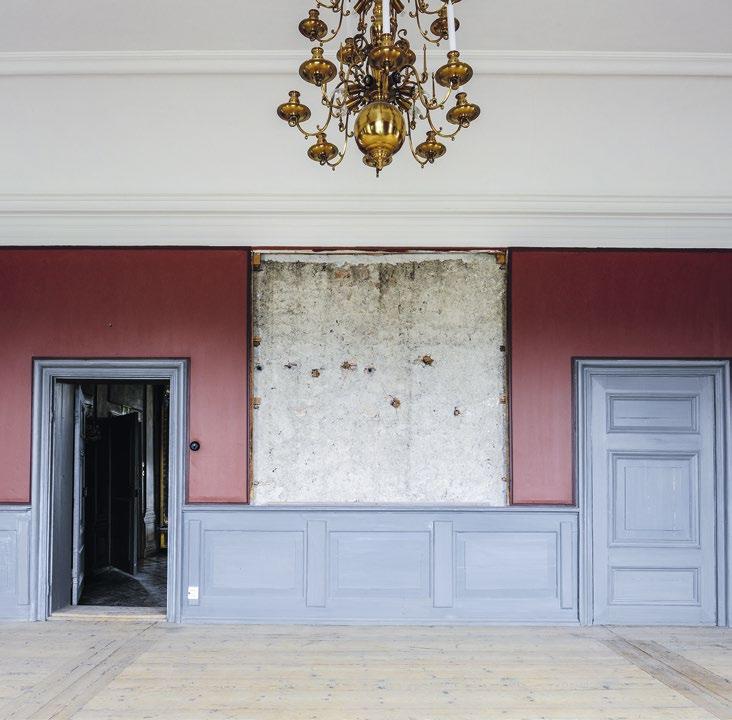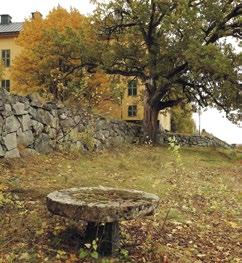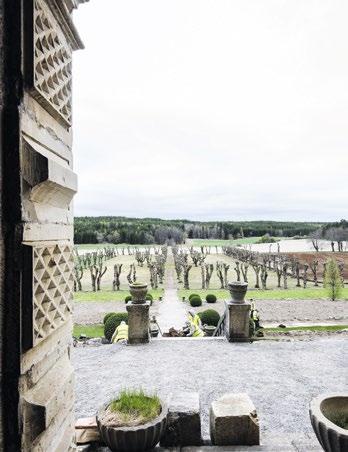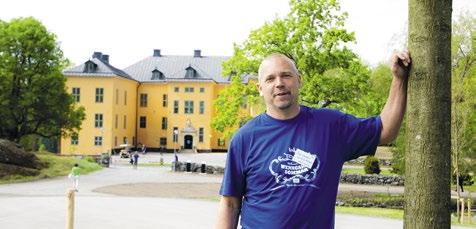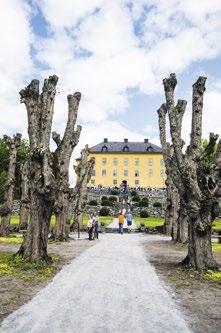
6 minute read
The gardens take shape
At the end of March the importation of plants began at Wenngarn. Two lorries loaded with boxwood, privet, hornbeam, lime tree, yew and a more than four metre tall ornamental cherry tree which now welcome visitors at the entrance of the estate. Shortly afterwards soil preparation began for the initial plantations.
The soil in the three terraces was dug-up, fertilized and trees and bushes were planted. Shrub, trees and plants have then been allowed develop and grow the last 30 years. The next stage saw an abundance of different sorts of old fashioned white roses, peonies, delphiniums, and other cream-colored plants that make a stark contrast to the backdrop of greenery. Lawns were rolled out onto each terrace. Garden designer Daniel Bell has been influenced by the previous traditions of the garden, but also aspires to add his own vision of a romantic, light and airy terrace-cultivation. A garden that hopefully awakens the urge in visitors to stroll in and discover more of its beauties. The ambition of the project is to create a garden for all tastes. A place to return to and visit several times. That is why the seasonal variations of the plants are of great importance.
Advertisement
Down below the terraces you can, since mid-April, see the pollard park. The lime trees have lost their rambunctious appearance and the path down towards the fountain used to still be strewn with brushwood. It has been cleared away and the fountain has been given new life. Cascades of water create a sense of life and movement to the centre of the park. Magnus Gabriel De la Gardie and his architect Jean De la Vallé took the fountains to Sweden. Sadly, the architect’s project of diverting rain from dams situated from higher levels in the distance, and using 400 hollowed oak logs functioning as channels was never completed.
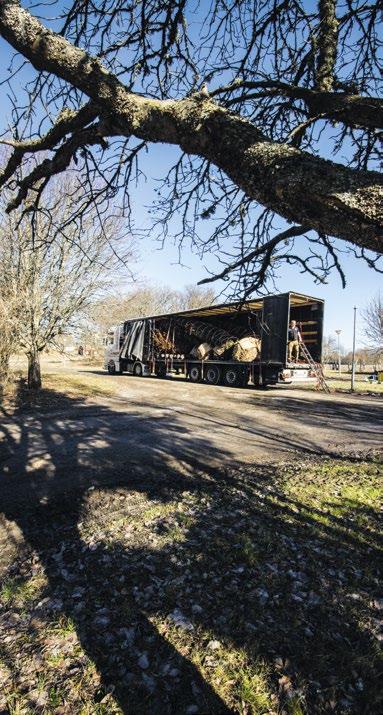
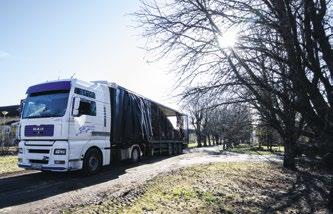
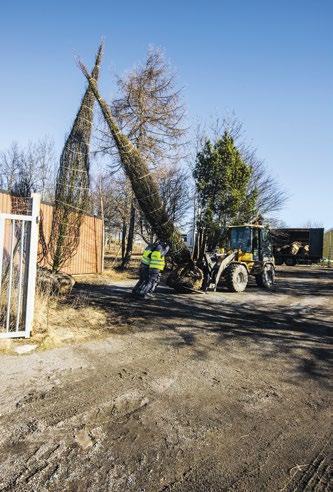
With the castle behind us we gaze out over Sweden’s first baroque garden that was a hybrid between beauty and practicality already in the 17th-century. A vegetable garden in the making for the new Wenngarn, flanked with two double rows of 300 hop plants. The idea is here to grow berries, apples, pears and all kinds of vegetables in reasonable amounts and accessible plots of land. Partly so that the hotel restaurant can become self-sufficient - partly to attract people, various associations and others to actively partake in the cultivations. The plan is to cover approximately 20 per cent of the area with vegetables. So there is going to be plenty of room for other things, for instance flowers, flax, hops, sunflowers and fields of barley – barley that can then be used as sheaves, after harvesting and reaping, for hungry birds in the wintertime.
The area between the vegetable garden and the terrace will make room for meadow-flowers, elderflower, sea buckthorn and apple trees. A natural space that perfectly suits picnics and social gatherings around garden furniture.
Slightly to the right of the entrance of the castle a topiary will be created, which is a commonplace sight around castles and manors throughout Europe. A topiary refers to the practice of clipping foliage and twigs of plants so that they look like geometrical shapes, animals or some sort of mythical creature. Here at Wenngarn there will be no eccentric sculptures but finely cut yew.
The challenge has been to select plants with colour and vibrancy that bring pleasure and enjoyment to visitors and residents. That spring came early this year was an added bonus, at least initially, but during the first part of May it became cold and part of the gardening had to be put on hold.
To create an air of uniqueness to the area a specific group of species is being collected – the first of its kind in Sweden. In short, the intention is to preserve the continuation of this variety of plants, for example: fruits, berries, vegetables and ornamental plants. This practice is common in England, where private gardens and castles open their gates to exhibit their national collections of for example magnolia, rhododendron and snowdrops.
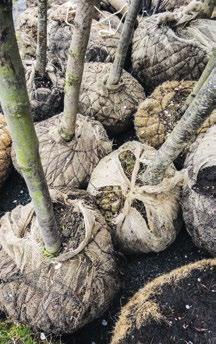
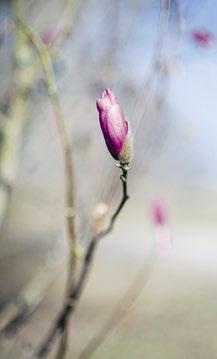
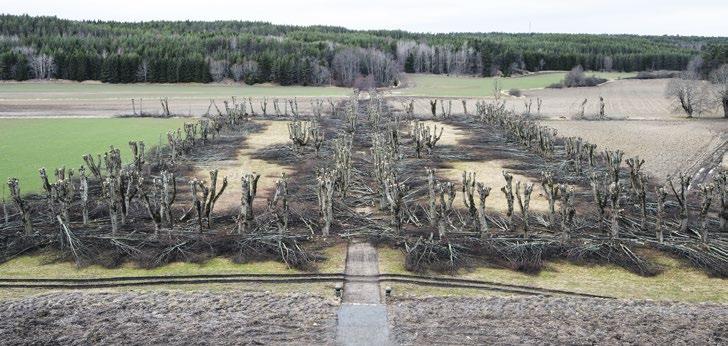
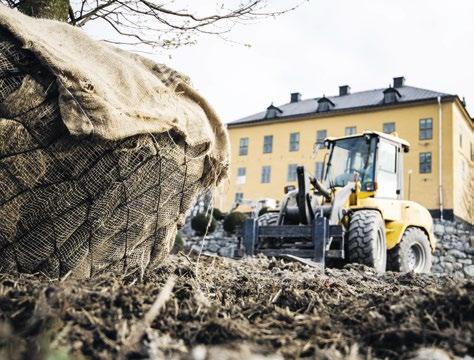
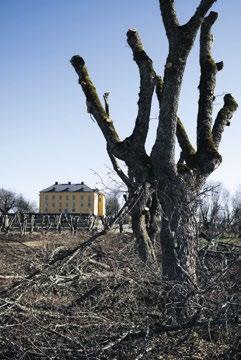
– At Wenngarn the first national collection of ornamental cherry trees is being created, says Daniel Bell. Up to 120 different species are planted in the large area opposite of the main entrance of the hotel.
The trees bloom from late spring up to early summer. Truly an incomparably beautiful sight with its shifting palette of delicate pinks and whites.
The framing of the large area that faces the road outside the hotel is made from an abundance of perennial plants. It is an 80 metre long shrub-like plantation that sweeps through the landscape, creating the shape of an arc. Here a profusion of red and pink flowers bloom alongside the late blooming lilacs and a countless amount of other plants. The large open space is sown with grasses of different height and now there also is a stage for performances and other public arrangements. At the back of the hotel, facing the conference building, there is now a small garden. Boxwood, magnolia and beech will flourish in the afternoon sun. Two imposing quince trees with delightful flowers and fruits will complete the icing on this horticultural cake. In the lower corner of the little garden there is now also a herbal garden.
Heading back to the castle you will encounter the “fire-pond”, a little reservoir used back in the days to put out fires. It lies just in front of the “Dam-Cottage”. It creates an air of tranquillity that has recently taken on a new life in forms of different types of grass, fleur-de-lis and waterlilies.
A great amount of thought and planning has gone into the gardens at Wenngarn, providing fragrance, colours and fresh vegetables. It is a mixture of aesthetic delight and palatal pleasure.
Prunus “TaiHaku” is a deciduous and fully blossoming ornamental white cherry tree. The elliptical green leaves can reach 20 cm in length and 8 cm in width. The leaves are initially bronze-coloured and shift into yellow/orange in autumn. The white flowers can become 6 cm in width and blossom at the same time as leaves emerge. It is often times referred to as the “Great White Cherry”. The tree at the entrance of Wenngarn is 4 metres tall and was around 30 years old when it was planted.
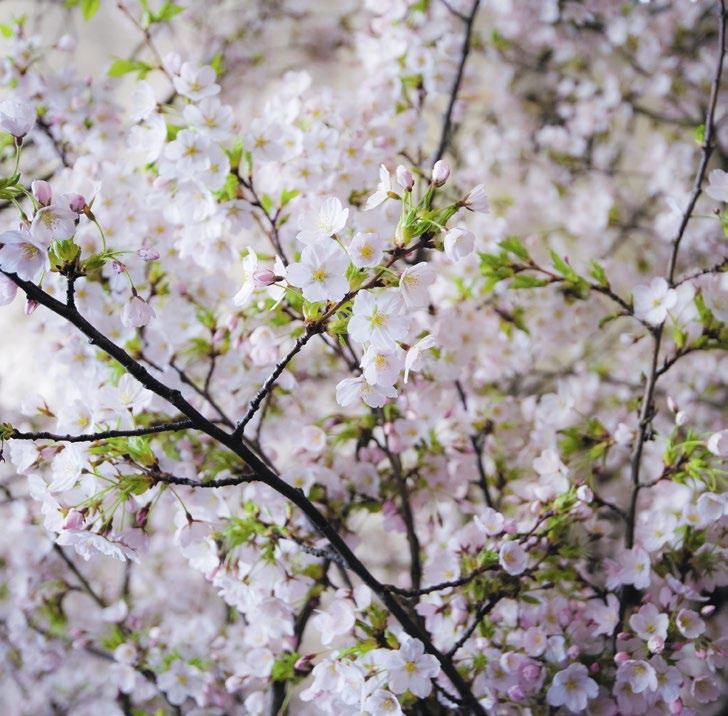
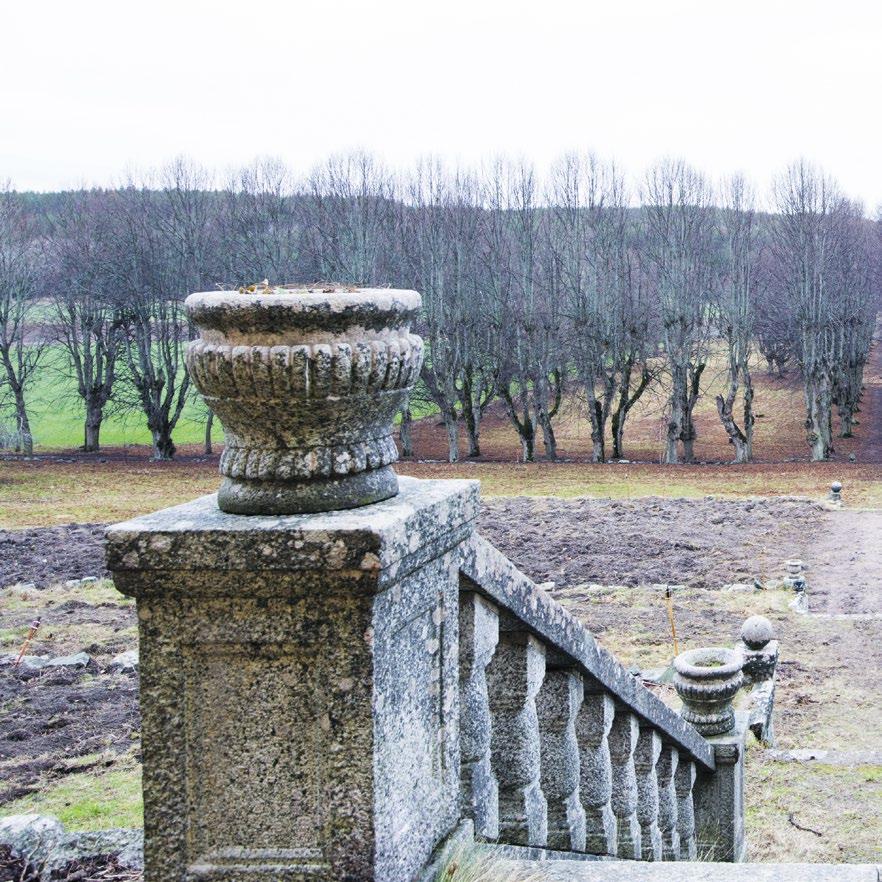
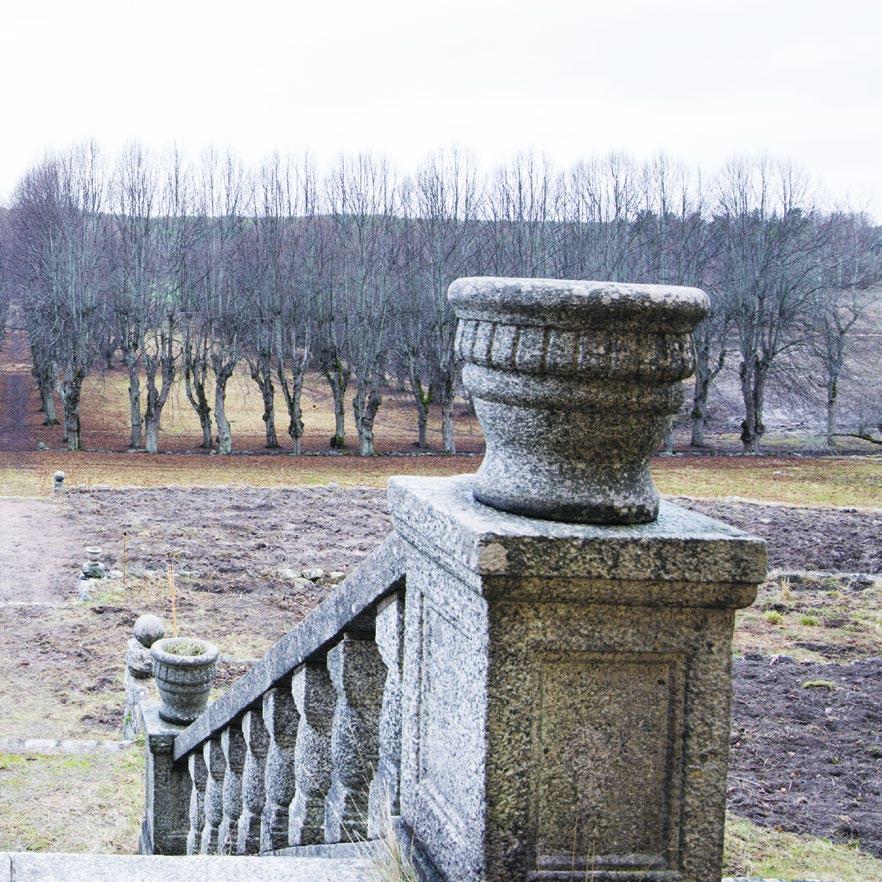
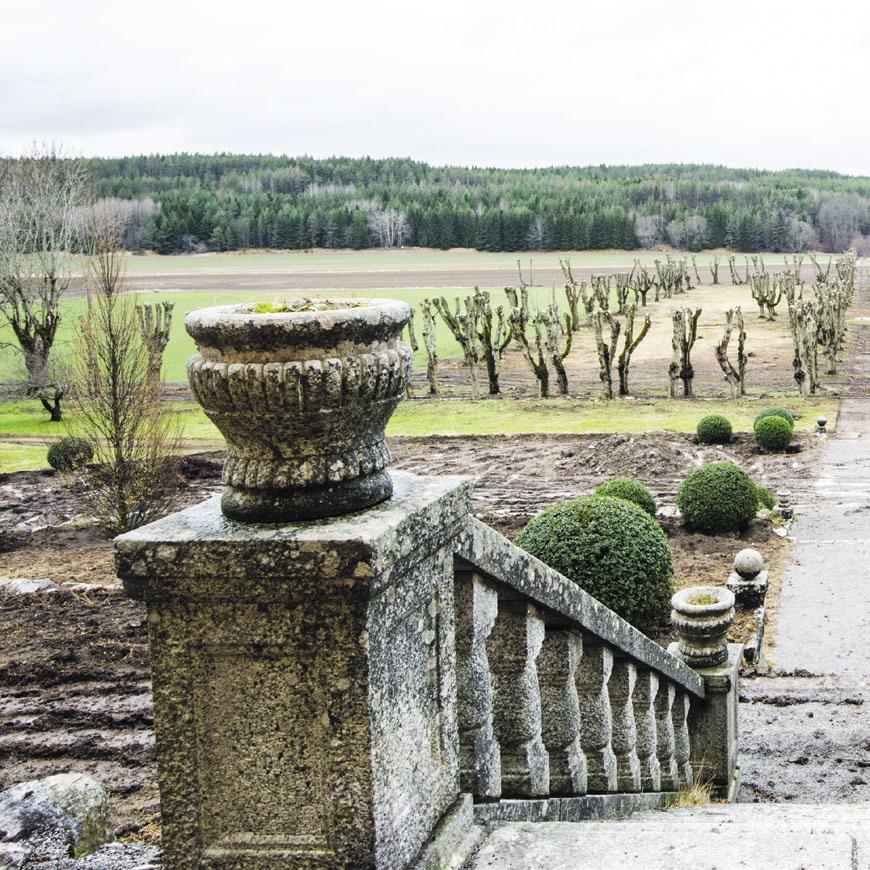
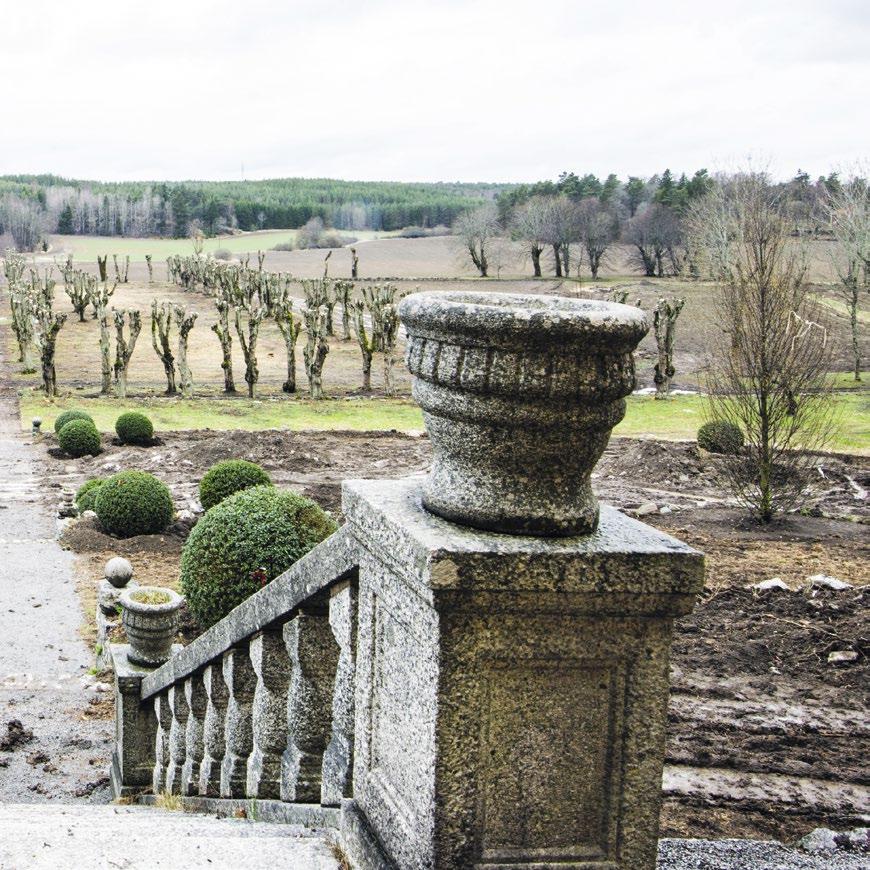
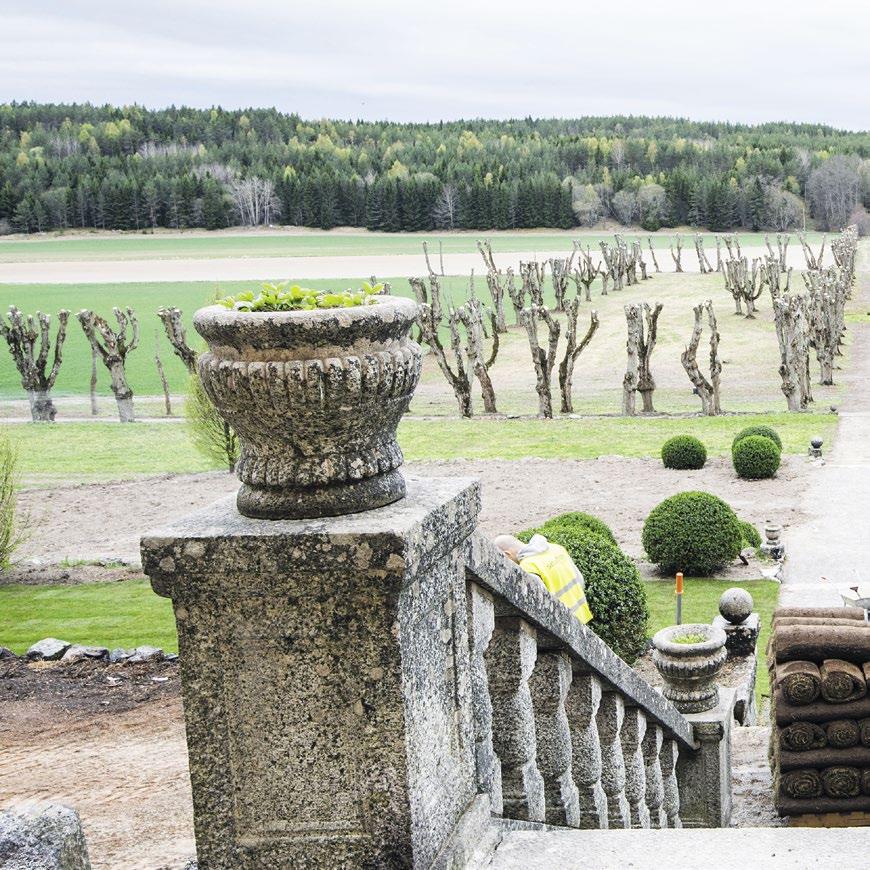
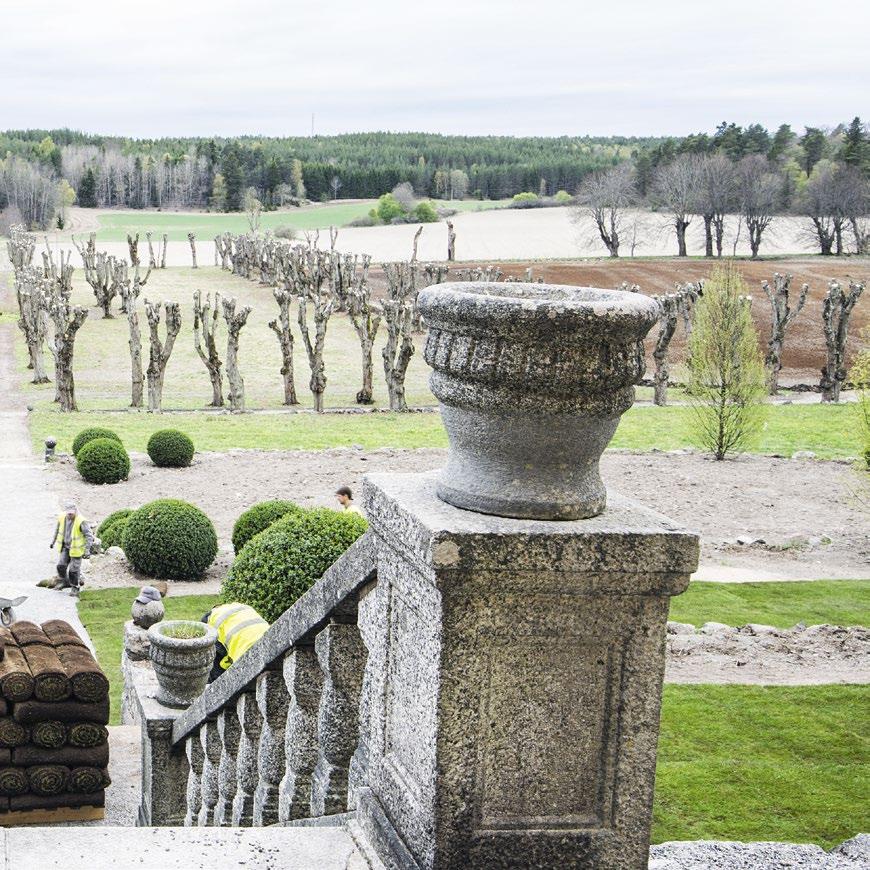
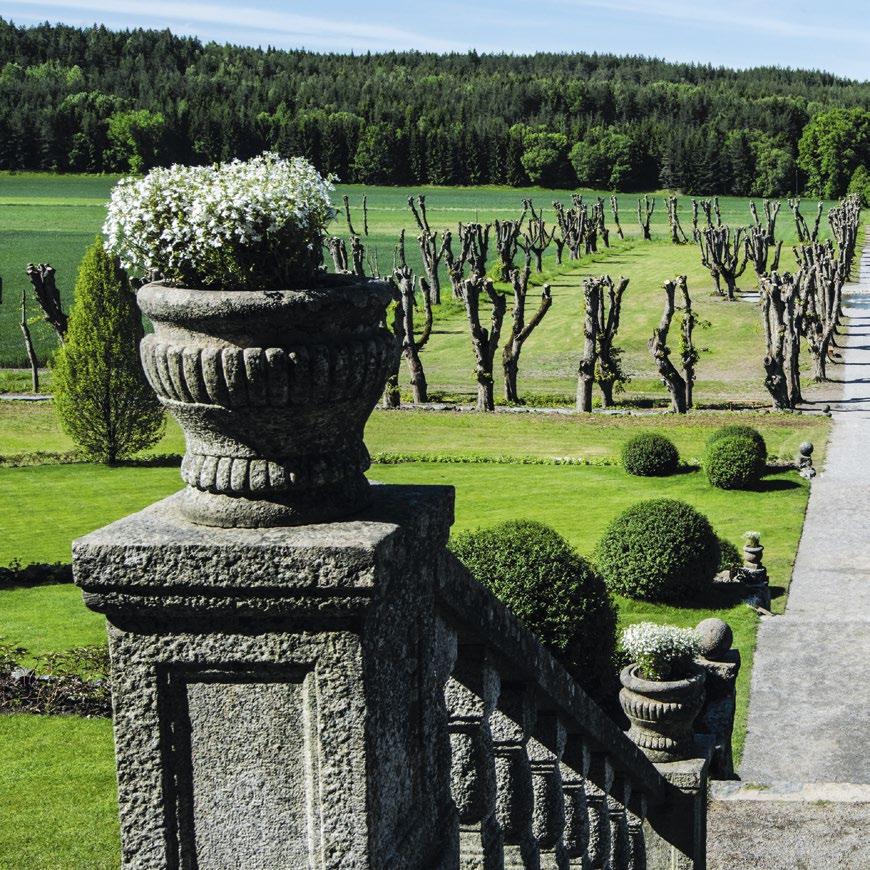
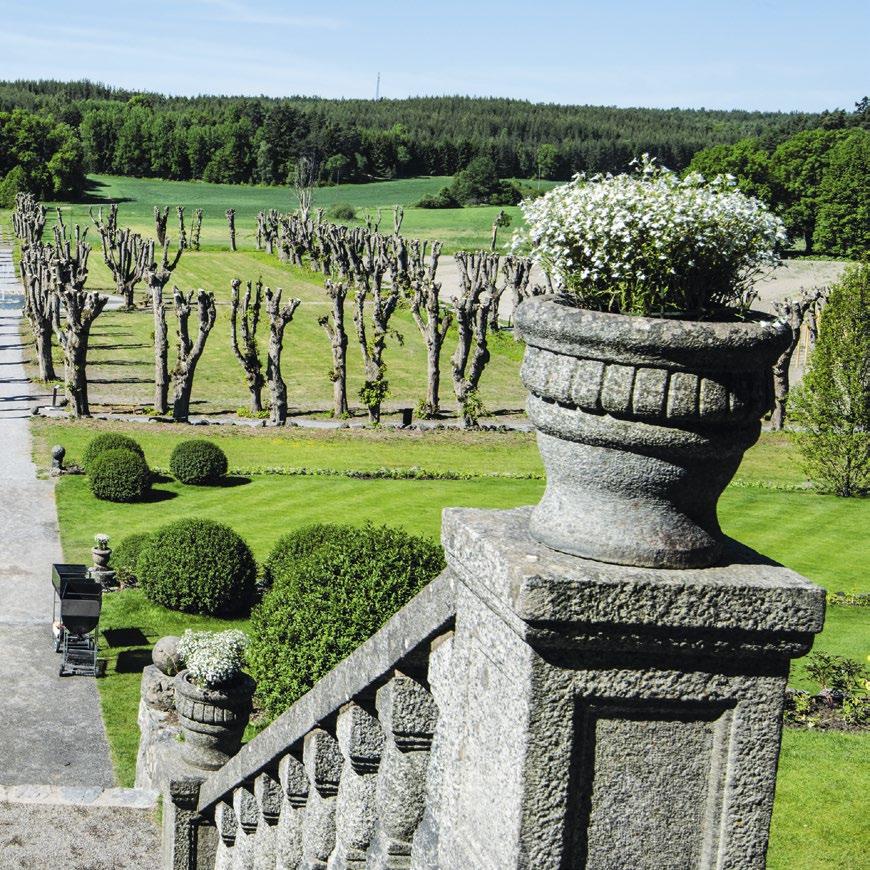
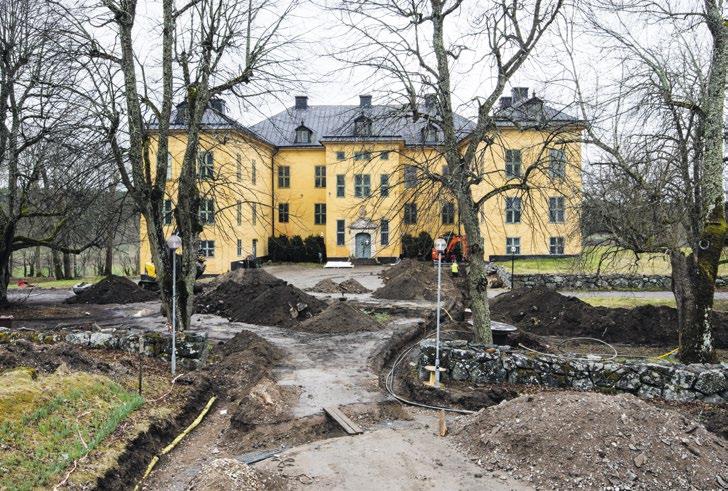
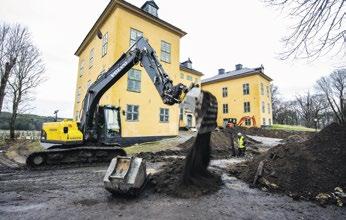
Not many days till the sneak preview of the Hotel Anstalten. Up to the very last second ground work and drawing of cables went on around the castle area and also fine-tuning in the hotel.
